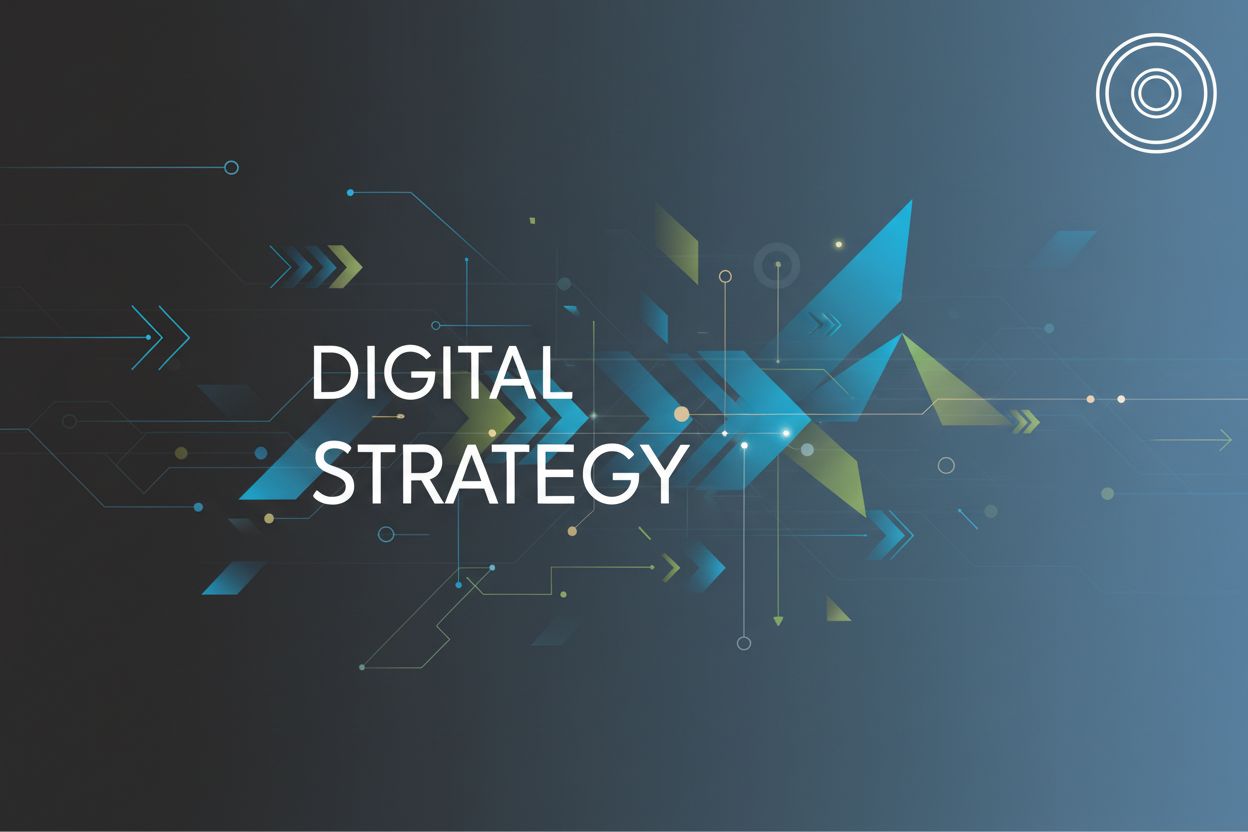Defining Native Advertising Strategies
TL;DR
Understanding Native Advertising
Okay, so you're probably scrolling through your feed and see an ad that doesn't scream "I'm an ad!" That's the magic of native advertising. It's designed to blend in, not barge in.
It's all about fitting in. Native ads mimic the look and feel of whatever platform they're on—think a sponsored post on Facebook or a promoted video on TikTok. The goal? To be less disruptive and more engaging.
- Native ads are non-intrusive. Instead of annoying pop-ups, they're designed to feel like a natural part of the user experience.
- They're adaptable. Whether it's a blog post or a social media update, native ads can be tailored to fit seamlessly into any platform.
- Basically, they bypass ad blindness. Our brains are trained to ignore traditional ads, but native ads slip right past those defenses. Why? Because our brains are wired to recognize patterns and avoid things that look like interruptions. We've learned to tune out anything that screams "advertisement!"
Well, people are tired of being bombarded with traditional ads. We've all developed a sixth sense for spotting them and tuning them out. Display ads? Click-through rates are, like, extremely low.
In fact, HubSpot reports that standard ad formats get an average CTR of 0.12%, while native ads average 0.3%.
See? Native ads get more views, higher engagement, and don't make people wanna throw their phones across the room.
The key, though, is transparency. You gotta label that stuff. No one likes being tricked, and the FTC is watching, anyway. The FTC's role is to ensure that advertising is not deceptive, meaning native ads must be clearly disclosed as paid content to avoid misleading consumers.
Next up, we'll dive into why this approach is so effective and how it compares to old-school advertising.
Why Native Advertising Works (And How It Beats the Old School)
So, why is this "blend-in" approach so darn effective? It boils down to a few key things that traditional advertising just can't touch.
Old-school advertising, like banner ads or interruptive TV commercials, often triggers our "ad blindness." We've seen them a million times, and our brains have learned to filter them out as noise. They demand attention by being loud and obvious, which, ironically, makes us tune them out even faster.
Native advertising, on the other hand, respects the user's experience. By mirroring the platform's design and content style, it feels less like an interruption and more like a recommendation or a relevant piece of information. This leads to higher engagement because users are more likely to actually consume the content. Think of it this way: you're more likely to read a magazine article that looks like other articles in the magazine, rather than a giant, flashing banner on the side. This natural integration means users spend more time with the content, leading to better brand recall and a more positive perception of the brand.
Types of Native Advertising: A Detailed Overview
Okay, so native advertising has a lot of flavors, right? It's not just one thing, and honestly, figuring out where to start can feel like choosing from a Cheesecake Factory menu. Let's break down some of the main types, so you know what you're looking at.
Think about scrolling through Facebook, Instagram, or even your favorite news site. See those posts that kinda look like everything else, but say "Sponsored"? That's an in-feed ad. The whole point is to make them feel like they belong, not like they're shouting for your attention. I mean, who even clicks on those banner ads anymore?
- Seamless Integration: They copy the style of the feed, using similar fonts, images, and layouts. It's all about not disrupting the user experience—you want people to actually see the ad, not immediately scroll past it.
- Diverse Examples: You might see a promoted post from a clothing brand on Instagram, a sponsored article in your news feed, or even a video ad that appears between TikToks. The key is that it’s in the feed, not on the side.
- Effective Design: The best in-feed ads don't feel like ads. They tell a story, offer value, or entertain you—aligning with the value-driven approach highlighted by HubSpot. As HubSpot says, you want customers to feel like the hero, not the brand.
It isn't rocket science, right? Make it blend, make it interesting, and don't be annoying.
Sponsored Content: The Deep Dive
Next up, we'll talk about sponsored content—which gets even more interesting because it's basically an entire piece of content created to feel native.
Sponsored content is a type of native advertising where a brand pays a publisher to create and distribute content that aligns with the publisher's editorial style and audience. This isn't just a small ad unit; it's often a full article, video, infographic, or even a podcast episode that the brand has a hand in creating. The goal is to provide genuine value to the reader, much like regular editorial content, while subtly promoting the brand's message or products. Think of it as a long-form native ad that offers a deeper dive into a topic relevant to both the brand and the audience. It's a powerful way to build trust and authority by providing helpful or entertaining information that naturally leads back to the sponsoring brand.
It isn't rocket science, right? Make it blend, make it interesting, and don't be annoying.
Crafting Effective Native Advertising Strategies
Native advertising, when done right, doesn't feel like advertising at all. It's like that friend who always knows the perfect thing to say, fitting seamlessly into the conversation. But how do you actually do that?
Well, it starts with knowing who you're talking to. I mean, you wouldn't tell a grandma the same joke you'd tell your college buddy, right?
Figuring out your target audience is critical. You need to know their interests, their pain points, and where they hang out online. You can't just throw stuff at the wall and hope it sticks.
- Buyer personas are your friend. Develop detailed profiles of your ideal customers, going beyond basic demographics. What are their goals? What keeps them up at night? What kind of content do they actually enjoy? For example, if you're targeting small business owners, knowing their lunch break habits might inform you that they're more likely to scroll through LinkedIn during that time, making it a prime spot for a sponsored article offering quick business tips.
- Market research is essential. Surveys, focus groups, social listening—anything to get inside your audience's head. What language do they use? What are their unspoken needs? This helps you craft native ads that resonate on a deeper level. Are they looking for quick tips, in-depth guides, or just a good laugh?
What do you really want to achieve with your native ad campaign? Just "more sales" is too vague. Is it about boosting brand awareness, generating leads, or driving direct conversions? That decision influences everything.
- Campaign objectives should be crystal clear. Whether you aim to get people to sign up for a free trial, download an e-book, or buy a specific product, defining this upfront is crucial.
- Platform and content selection is all about matching the goal. A visually stunning Instagram campaign might be perfect for brand awareness, but a detailed white paper on LinkedIn could be better for lead generation. Choose wisely.
The key to native advertising is creating content that people actually want to see. It's gotta align with the publisher’s style and offer a seamless user experience.
- Align with the publisher. It's like showing up to a party dressed appropriately. You don't want to stick out like a sore thumb cause that's not good, so your content should naturally blend in with the platform's tone and style.
- Strong headlines and visuals are crucial. Grab their attention instantly. Use eye-catching images, videos, and headlines that pique curiosity.
- Clear calls-to-action guide the user. Tell them what to do next. But keep it subtle, remember?
Collaborating with Publishers for Native Campaigns
Next, we'll see how you can work with a publisher to make it all work.
Successfully executing native advertising campaigns hinges on a strong partnership with publishers. They are the gatekeepers of their audience and understand what content resonates best on their platform.
- Content Ideation and Creation: Collaborate closely with the publisher's editorial team to brainstorm content ideas that align with both your brand's objectives and the publisher's audience interests. This might involve joint content creation sessions or providing your brand's expertise for them to weave into their editorial framework.
- Understanding Publisher Guidelines: Each publisher has specific guidelines for native advertising, including disclosure requirements, content formats, and tone of voice. Adhering to these is crucial for maintaining the integrity of the native ad and ensuring it's accepted onto the platform.
- Distribution and Promotion: Work with the publisher to determine the best distribution strategy for your native content. This could involve organic placement within their feeds, paid promotion through their channels, or inclusion in their newsletters.
- Performance Tracking and Reporting: Establish clear metrics for success and agree on how performance will be tracked and reported. Publishers can offer valuable insights into audience engagement and content performance on their platform.
This collaborative approach ensures that the native advertising campaign feels authentic to the publisher's brand while effectively reaching and engaging your target audience.
Measuring and Optimizing Native Ad Performance
Alright, so you've got your native ads out there, blending in all nice and sneaky. But how do you know if they're actually working? It's not like slapping up a billboard and counting cars, y'know?
- Engagement rates are huge. Are folks actually reading your content, or just scrolling past? Look at time spent on the page, shares, and comments. If people are spending less than, say, 15 seconds? Something's wrong.
- Click-through rates (ctr) and conversion rates tells you if people are taking action. Are they clicking through to your site? Are they signing up for that newsletter or buying that thing? No clicks, no love.
- ROI and cost-effectiveness: Is the return on investment justifying the expenditure? You gotta track how much you're spending versus how much you're making.
Don't just set it and forget it. Native advertising is all about tweaking and improving.
The Importance of A/B Testing and Continuous Improvement
Next, we'll get into the importance of A/B testing and keeping on improving. Gotta keep those ads fresh!
In the dynamic world of digital marketing, native advertising is no different – it requires constant refinement to stay effective. This is where A/B testing and a commitment to continuous improvement become paramount.
A/B testing, also known as split testing, involves creating two or more versions of an ad element (like a headline, image, or call-to-action) and showing them to different segments of your audience to see which performs better. For instance, a healthcare company might test two versions of a sponsored article, one focusing on convenience and the other on expertise, to see which drives more appointment bookings. This data-driven approach allows you to identify what truly resonates with your audience, leading to more impactful campaigns.
Beyond A/B testing, continuously analyzing your campaign data is crucial. If one headline is killing it, consider how to replicate that success. If a certain image is tanking, it's time to ditch it. The digital landscape is always shifting, and what worked last month might not work this month. Agility is key to staying relevant and ensuring your native advertising efforts continue to deliver strong results.
Challenges and Considerations in Native Advertising
Native advertising: it's not all sunshine and rainbows, you know? Sure, it's less annoying than those pop-up ads from, like, the early 2000s, but there's a few things you gotta watch out for. It's like walking a tightrope.
Are You Really Being Honest? The whole point is that native ads blend in, but you can't trick people. I mean, you can, but it's a bad look. Transparency means being upfront about the ad's nature, not hiding it completely.
Avoiding the Clickbait Trap: Headlines are everything, but don't go full clickbait. Like, "You Won't BELIEVE what this CEO did!" is gonna make people roll their eyes so hard, they might pull something.
FTC's Watching: The FTC doesn't play around, and they have guidelines you gotta follow. Gotta stay compliant!
GDPR, CCPA, and Alphabet Soup: Data privacy is huge, and laws like GDPR and CCPA ain't something to ignore. GDPR (General Data Protection Regulation) and CCPA (California Consumer Privacy Act) are regulations that protect user data privacy. They dictate how personal information can be collected, processed, and stored, and advertisers must ensure their native advertising practices comply with these rules to avoid hefty fines and maintain consumer trust.
Whose Content Is it, Anyway? Publishers want good content, advertisers want sales. It's a push and pull. Finding that sweet spot where both sides win is key. This involves clear agreements on content ownership, editorial control, and usage rights to avoid disputes.
Matching the Vibe: It's like showing up to a party dressed completely wrong. Your ad needs to fit the publisher's tone. This means understanding the publisher's brand voice, audience expectations, and content style to ensure your native ad feels like a natural extension of their platform.
The Future of Native Advertising
Okay, so native advertising is evolving, right? It's not just about blending in anymore; it's about anticipating what's next.
- ai and machine learning are gonna make ads way more personal. Imagine ads that know what you want before you do. It's a significant development that could lead to hyper-personalized advertising experiences.
- Audio and voice-based ads are gonna get bigger. Think about it: podcasts, smart speakers—it's a whole new frontier, and if done right, won't be as annoying as radio ads.
- Integrating with ar and vr will be a game-changer. Imagine "trying on" clothes or "walking through" a store from your couch. Retailers could see conversions jump way up.
Consumer expectations for personalization are only going to increase. People will expect ads that are super-relevant, or they'll just tune out. The prevalence of mobile and video consumption necessitates content that is easily digestible on these platforms.
Also, with the changing landscape of social media, we've gotta adapt to how consumers are consuming content. TikTok isn't the same as Facebook, y'know?
Native ads are becoming integrated with shopping features. This makes for smoother online purchases. Integrated shopping features streamline the purchase process, eliminating friction for consumers. Shoppable ads are driving higher conversion rates.
Success in the future of native advertising will depend on achieving relevance, personalization, and a non-intrusive experience.




